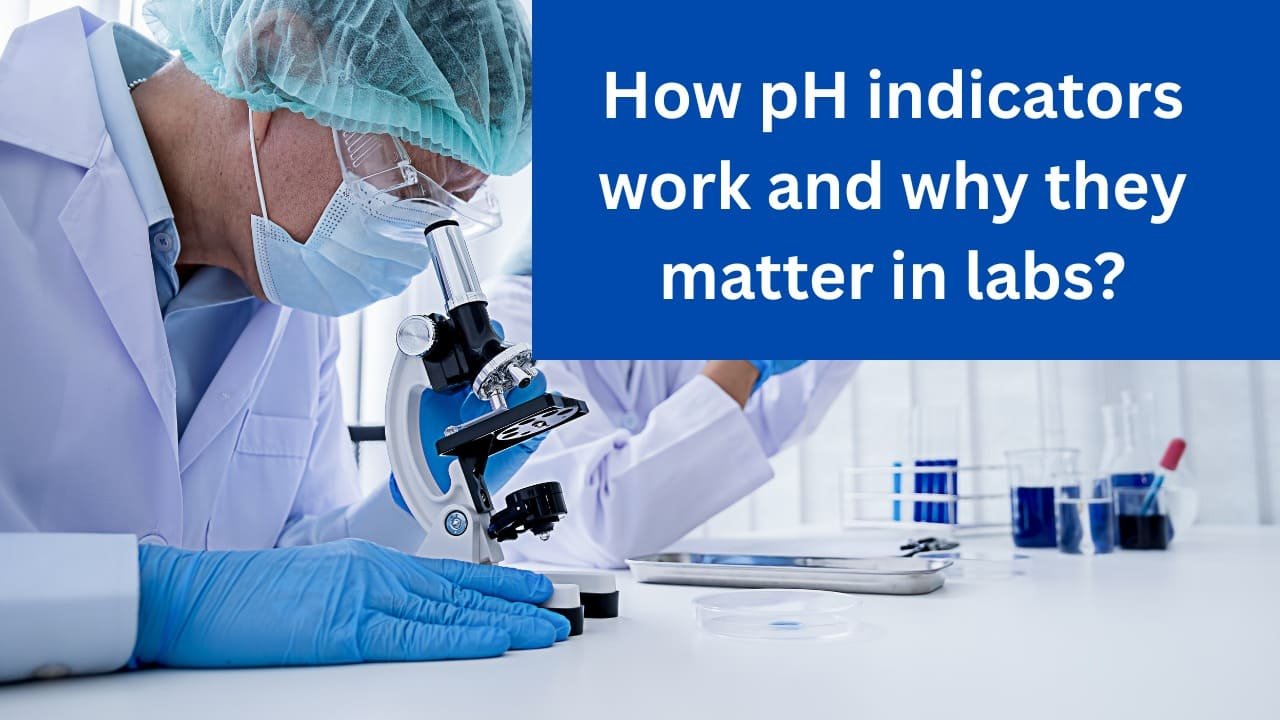Understanding acidity and alkalinity is essential in the fascinating world of chemistry. Whether in laboratories, industrial processes, environmental monitoring, or even the food and cosmetics industry, knowing a solution’s pH (potential of hydrogen) helps determine its chemical nature and usability. But how do scientists and technicians determine pH so efficiently?
The answer lies in pH indicators, those colorful compounds that change their hue depending on whether a substance is acidic, neutral, or basic. These indicators are more than just a tool; they represent a powerful bridge between theoretical chemistry and real-world application.
In this blog, we’ll dive deep into the science behind pH indicators, exploring how they work, their chemical properties, and how they’re used across multiple industries.
What Is pH and Why Is It Important?
pH is a scale used to measure the acidity or basicity of a solution, ranging from 0 (very acidic) to 14 (very basic), with 7 being neutral. It’s a logarithmic scale based on the concentration of hydrogen ions (H⁺) in a solution:
- Acidic solutions have a high concentration of H⁺ ions.
- Basic (alkaline) solutions have a high concentration of hydroxide ions (OH⁻).
pH plays a crucial role in:
- Chemical reactions
- Biological functions
- Industrial processes
- Environmental safety
Understanding pH helps scientists control reactions, test water quality, manufacture products, and ensure safety.
What Are pH Indicators?
pH indicators are substances that visibly change color depending on the pH of their environment. These compounds are typically weak acids or bases that exhibit different colors in their protonated and deprotonated forms.
A well-known example is phenolphthalein, which is colorless in acidic conditions but turns pink in basic environments (pH ~8.2–10.0).
The color change occurs due to the change in molecular structure when the indicator either gains or loses hydrogen ions. This structural change alters how the compound absorbs and reflects light, which we perceive as a color shift.
How Do pH Indicators Work? The Chemical Theory
To understand the science behind their color-changing abilities, it’s essential to look at their chemical equilibrium:
Most pH indicators are weak acids (HIn) that dissociate in water according to this reaction:
HIn ⇌ H⁺ + In⁻
- HIn (protonated form) has one color.
- In⁻ (deprotonated form) has another.
As the pH changes, the equilibrium shifts:
- In acidic solutions (low pH), the concentration of H⁺ is high, pushing the equilibrium to the left → more HIn → acid color.
- In basic solutions (high pH), the H⁺ concentration is low, shifting the equilibrium to the right → more In⁻ → base color.
The Henderson-Hasselbalch equation also helps predict the exact pH at which the color change occurs, making indicators useful for precise titrations.
Choosing the Right Indicator
The choice of indicator depends on:
- Expected pH range of the reaction or substance.
- Color contrast for easy visual interpretation.
- Interference from other compounds or solvents.
For example:
- In a strong acid–strong base titration, phenolphthalein is ideal.
- In a weak acid–strong base titration, methyl orange might be better suited due to a sharper color change in acidic ranges.
Practical Applications of pH Indicators
1. Laboratory Titrations
One of the most common uses of pH indicators is in acid-base titrations. An indicator helps pinpoint the equivalence point, where the amount of acid equals the amount of base. This allows chemists to determine the concentration or purity of a solution.
2. Water and Environmental Testing
Indicators are used to test the pH of drinking water, soil, industrial effluents, and natural water bodies. This helps monitor pollution levels and prevent environmental damage.
3. Food and Beverage Industry
Some food products undergo natural fermentation or acidification processes. pH indicators can help track freshness, fermentation status, or spoilage. For example, litmus paper is sometimes used in food testing.
4. Pharmaceuticals and Healthcare
Indicators are used in drug manufacturing, blood pH testing, and buffer solution preparation in medical laboratories.
5. Educational Tools
In schools and colleges, pH indicators serve as a fun and educational way to teach acid-base chemistry, especially using natural indicators like red cabbage extract.
Limitations of pH Indicators
- Color Perception: Subjective and depends on lighting conditions.
- Limited Range: Each indicator works best in a narrow pH window.
- Interference: The Color of the solution or the presence of other chemicals can affect visibility.
- Not Quantitative: For exact pH values, pH meters or digital probes are preferred.
Conclusion
pH indicators are simple yet powerful tools that reveal the hidden chemistry of solutions. From their acid-base equilibrium at the molecular level to their use in labs, industries, and classrooms, they exemplify how theoretical science can be applied in practical, visual, and impactful ways.
Whether you’re conducting a titration, testing water quality, or exploring chemistry for the first time, pH indicators offer an accessible way to understand and measure chemical environments.
At GSP Chem, we supply a wide range of high-quality indicators tailored to various industries and research needs. Reach out to us to explore the right solution for your lab or business.








